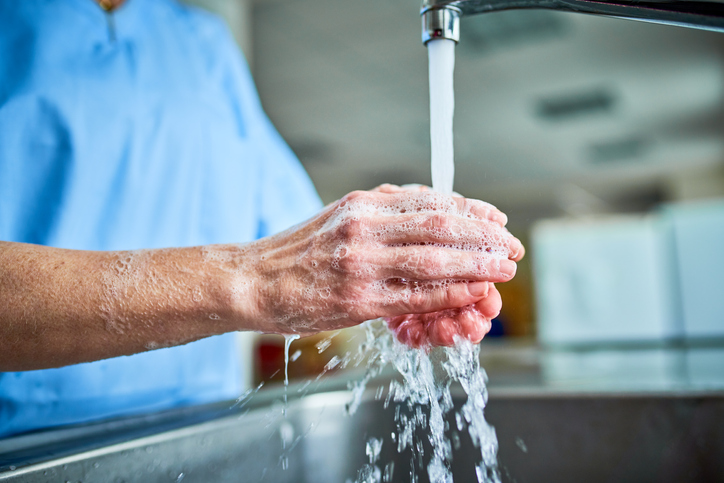By Lesley Martinez, MPH, CPH, CIC, Infection Preventionist, Driscoll Children’s Hospital
Proper hand hygiene for healthcare workers is a key infection prevention measure for the reduction of hospital-acquired infections (HAIs). However, capturing meaningful hand hygiene compliance audits can be challenging for healthcare organizations.
Our tool tutorial, published in the February 2023 issue of The Joint Commission Journal on Quality and Patient Safety, details our organization’s identification and implementation of a free mobile application to collect hand hygiene audits.
Selecting the Right Tool
Our organization, a pediatric hospital in south Texas, sought a solution to enhance the efficiency of hand hygiene observation data collection from traditional pen and paper methods but was not ready to support the infrastructure of an electronic hand hygiene monitoring system (EHHMS). The Infection Prevention team identified a stepping stone solution of a free mobile application, iScrub Lite, to collect hand hygiene audits. Our tool selection was driven by:
- application cost
- ability to define observation tracking method (e.g., in/out vs. the World Health Organization’s 5 Moments for Hand Hygiene)
- ability to customize application (e.g., healthcare worker type, department)
- ease of use
- ability to transmit data
- additional data points collected by application (e.g., timestamps, isolation status)
Start With the End in Mind
Mobile applications can be quickly downloaded and deployed, so our implementation and startup process was rapid. It is tempting to jump right in with the ease of use the application offers. However, it was imperative that we first evaluated how this application supported our data plan for hand hygiene compliance. Therefore, our initial step in application selection included a thorough evaluation of the measures we wanted to capture via the app for hand hygiene. We had to begin with the end in mind in terms of what data points should be captured and which should be shared with our organization. We wanted to go beyond just compliance rates, providing purposeful and actionable information.
Targeted improvement efforts by department and healthcare worker type were priority elements that needed to be captured by the application. We also determined it was important to evaluate if compliance was higher or lower on entry versus exit, or when a patient was on transmission-based precautions versus only following standard precautions. Knowing what data points we wanted to collect and evaluate allowed our team to plan and anticipate not only our analytics strategy but also future education and interventions.
On-Demand Analytics
In addition to enhancing the efficiency of collection of hand hygiene audits, the hand hygiene application has allowed our organization to have data more readily available. We have moved from time-consuming data entry of paper audits to having data available in an Excel dashboard. At implementation, time was allocated for development of the dashboard. But once created, the data has essentially been on demand — allowing a near real-time view of hand hygiene compliance.
Additionally, the Infection Prevention team now provides frequent updates to our organization on hand hygiene compliance. We have initiated announcing compliance by unit every week in a safety huddle comprised of organizational leaders. Furthermore, hand hygiene is a component of performance improvement projects across the organization. The application gives auditors the opportunity to email audits to a central point immediately after collection. These observations can be saved into the dashboard and the data set refreshed. We have gained efficiency in collection and data entry, as well as eliminated data transcription errors.
Overall, our transition to a mobile hand hygiene application has been quick, flexible, and dependable. For organizations hesitant to adopt an EHHMS, the variety of mobile applications supporting hand hygiene data collection may be a suitable steppingstone for your organization.
Lesley Martinez, MPH, CPH, CIC, is an Infection Preventionist in the Infection Prevention and Control Department at Driscoll Children’s Hospital in Corpus Christi, Texas.



